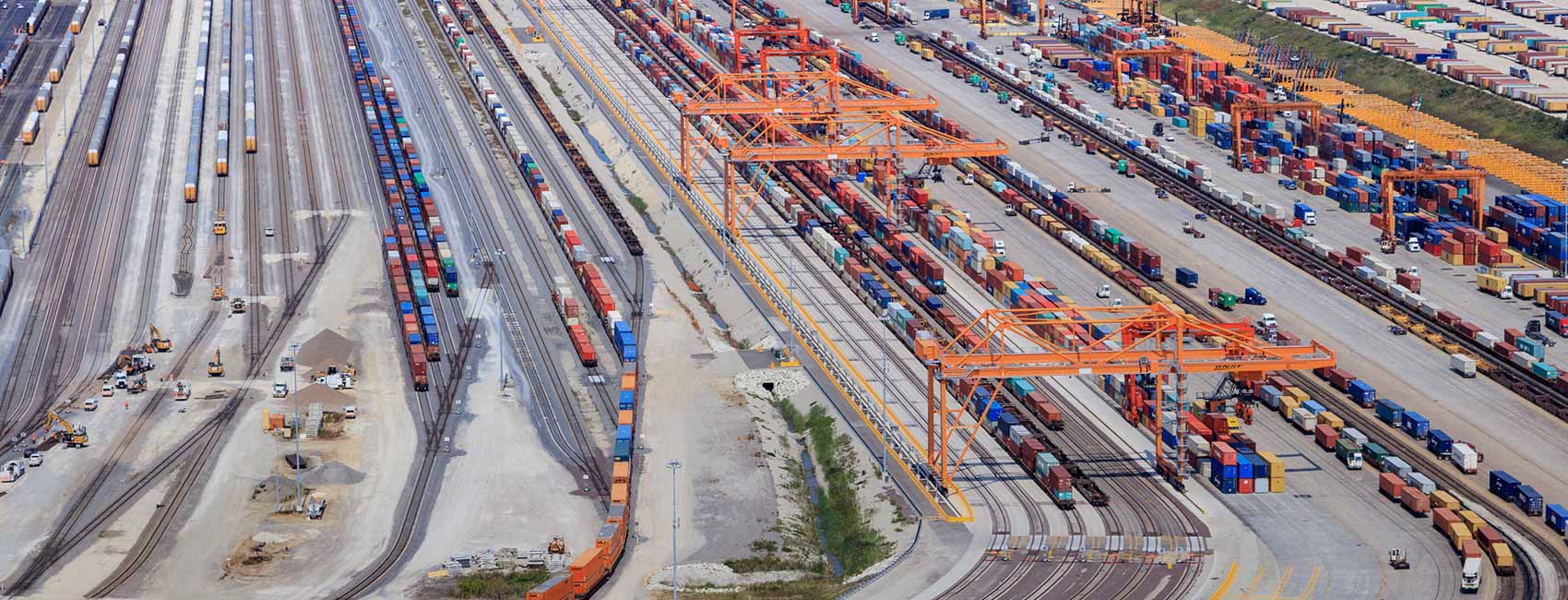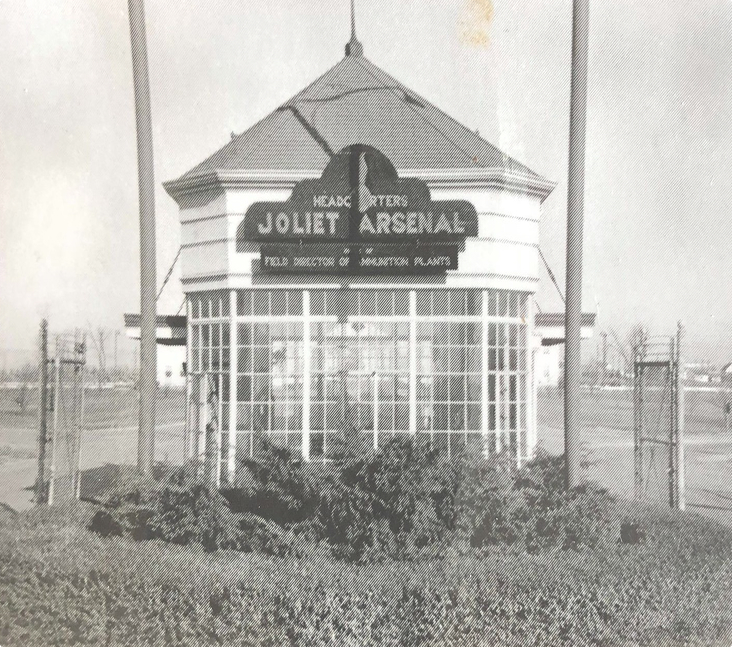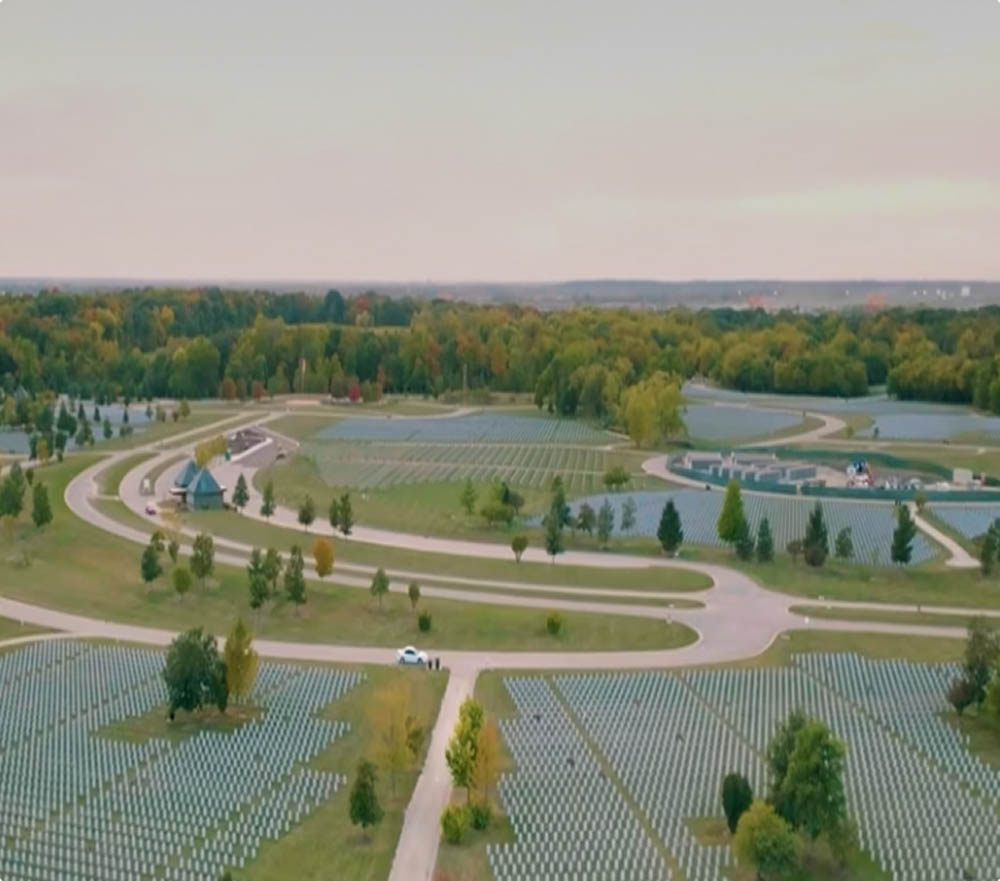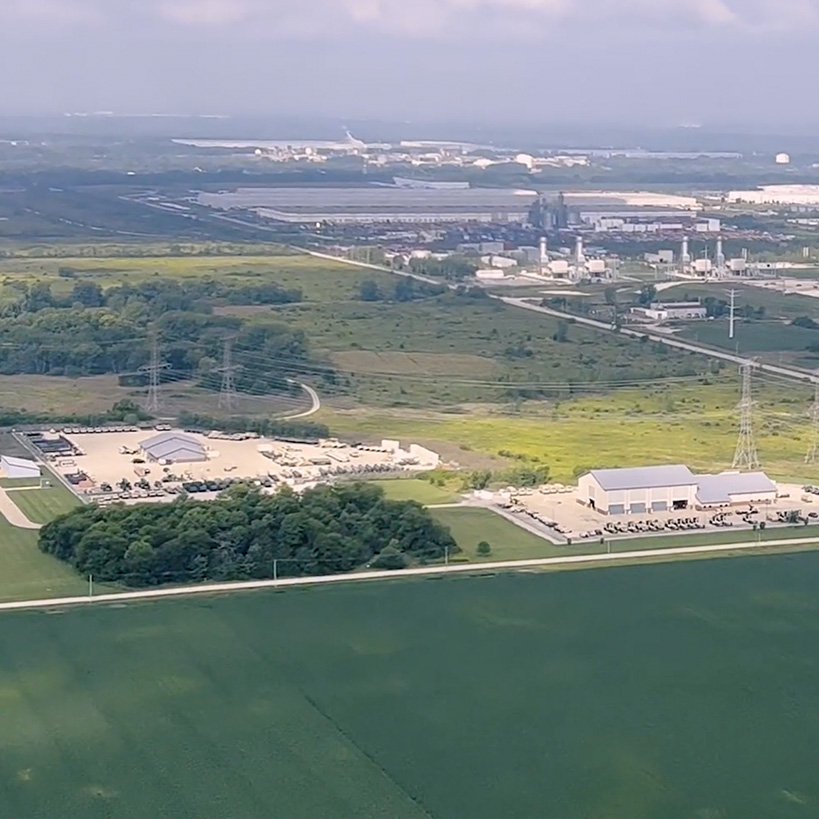Then: A Military Powerhouse 01 / 03
The Joliet Army Ammunition Plant was established in the early 1940s during the nation’s wartime industrial surge. Spanning more than 23,000 acres, the plant quickly became one of the country’s most vital munitions production sites—at one point supplying up to 57% of the Army’s TNT. It employed over 12,000 workers, many from surrounding Illinois communities, and played a central role in supporting U.S. military operations throughout World War II, the Korean War, and the Vietnam War.
By 1976, military production at the site ceased, and in 1993, the U.S. Army officially designated the land as excess property. What remained was a massive, contaminated expanse, once a critical defense asset, now needing environmental cleanup and a bold new vision for reuse.
Joliet Arsenal Exhibit & Guardhouse
The Joliet Arsenal once shaped American history as the world’s largest munitions producer. Today, its story lives on at the Joliet Area Historical Museum’s new exhibit and the restored Arsenal Guardhouse, alongside restored landmarks and public spaces to explore.
Arsenal Redevelopment Short History
The Joliet Arsenal’s 23,000 acres have been redeveloped from a munitions plant into a landscape of public uses including Midewin National Tallgrass Prairie, Abraham Lincoln National Cemetery, training facilities, the nation’s largest inland port, and the restored Arsenal Guardhouse with a museum exhibit.














